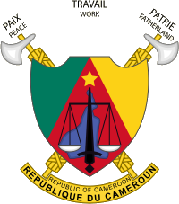Missions according to Decree No. 2013/169 of 27 May 2013 to organise MINPMEESA
- elaborating and implementing the handicraft development policy;
- identifying and promoting handicraft industries;
- facilitating the creation of handicraft enterprises;
- supervising handicraft enterprises, monitoring the application of standards and improving the quality of handicraft products;
- developing and implementing a strategy for the promotion of handicrafts, in conjunction with the administrations concerned;
- monitoring the implementation of capacity building mechanisms for craftspeople ;
- seeking out economic opportunities for handicraft products;
- defining and improving the status of craftspeople;
- promoting professional groups and trades;
- seeking out and developing support mechanisms for craftspeople, in conjunction with the administrations concerned;
- controlling the execution of programmes and projects in favour of craftspeople;
- exploiting the results of studies and surveys on the informal sector;
- exploiting the results of studies on the possibilities of migration from the informal sector;
- developing and implementing a national policy for migration from the informal sector to the formal economy.
The Department of Handicrafts and Migration of the Informal Sector(DAMSI) is composed of 02 Sub-Departments : the Sub-Department of Handicraft and the Informal Activities and Migrations Unit
The Sub-Department of Handicraft is in charge of:
- monitoring the development and updating of the nomenclature of handicraft trades, in liaison with the administrations concerned ;
- monitoring the identification of craftspeople and handicraft enterprises ;
- promoting professional groups and trades;
- promoting handicraft sectors with high growth potential;
- management relations between Consular Chambers and professional groups with the administration;
- connecting craftspeople with partner organisations ;
- developing and implementing development strategies for the handicraft industry;
- developing competitiveness and improving the quality of handicraft products;
- defining and implementing support mechanisms for craftspeople and handicraft enterprises;
- monitoring and organising promotional events ;
- promoting and facilitating exports of handicraft products, in conjunction with the relevant administrations.
The Informal Activities and Migrations Unit has as missions:
- the exploitation of the results of studies and surveys on the informal sector
- the elaboration and follow-up of specific studies on the control of the informal sector ;
- the monitoring of the evolution of the activities of the informal sector, in liaison with the competent administrations;
- the development and the keepping of a data file of informal sector actors and groupings ;
- the development and implementation of strategies for the evolution of informal sector actors towards the formal economy;
- the development and implementation of a support plan for informal sector actors in the formalisation of their production units;
- the design and implementation of support mechanisms for the modernisation of production units in the informal sector;
- the design and implementation of measures to promote migration;
- the development, in collaboration with the competent administrations, of administrative, fiscal and social regulations tailored to microenterprises.

